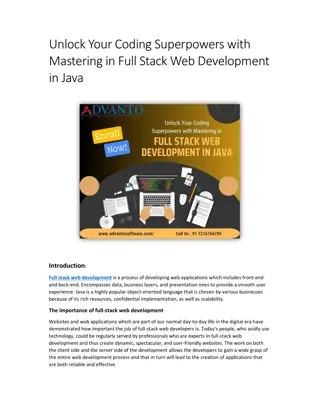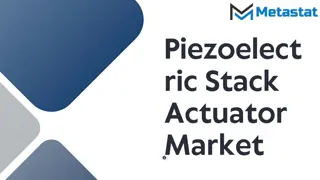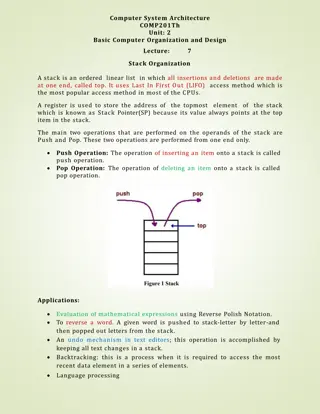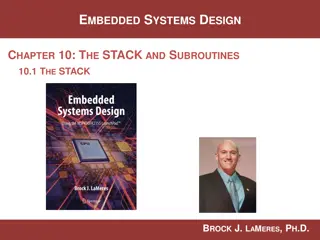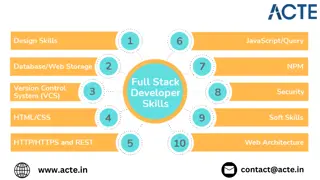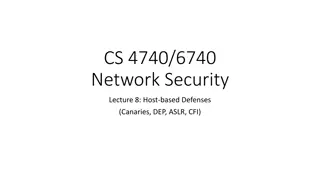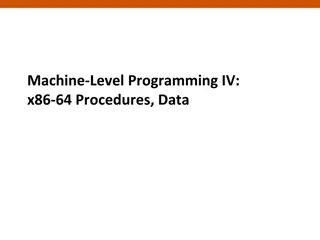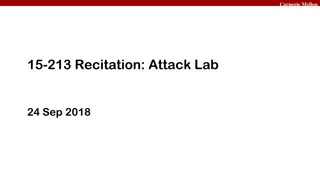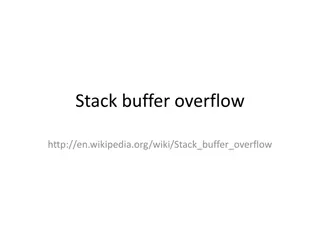Introducing Conga 3.0: The Web Stack of the Future
"Explore the cutting-edge features of Conga 3.0, the latest web stack that promises improved scalability, new threading model, secure features, and the ability to transmit files efficiently. With new features like enhanced threading capabilities, scalability improvements, and the option to run without secure features, Conga 3.0 is set to revolutionize web development."
Download Presentation

Please find below an Image/Link to download the presentation.
The content on the website is provided AS IS for your information and personal use only. It may not be sold, licensed, or shared on other websites without obtaining consent from the author.If you encounter any issues during the download, it is possible that the publisher has removed the file from their server.
You are allowed to download the files provided on this website for personal or commercial use, subject to the condition that they are used lawfully. All files are the property of their respective owners.
The content on the website is provided AS IS for your information and personal use only. It may not be sold, licensed, or shared on other websites without obtaining consent from the author.
E N D
Presentation Transcript
1 Web Stack of the Future (Introducing Conga 3.0) Bj rn Christensen Morten Kromberg
2 What Web Stack? Conga 3.0
3 What Web Stack? Current... ...of the Future App. App. APL HTML SOAP REST, etc HTML(CSS+JS) SOAP REST, etc MiServer (or similar) HTTP Conga 3.0 HTTP TCP TCP Conga 3.0
4 New CONGA Features v3.0 adds more features than any recent release: New Threading Model Improved Scalability Ability to run without secure features enabled Transmit files Built-in support for HTTP Protocol Including WebSockets for bi-directional Object-Oriented Wrappers Isolate multiple uses of Conga in the same APL process (e.g. Application vs Source Code Mgt) Experimental support for User Datagrams (UDP) Conga 3.0
5 New (Optional) Threading Model Traditional approach is to run one APL thread which handles both Connect and Receive events 'OnlyConnections' property specifies that DRC.Wait on the server will only report new connections DRC.Wait on individual connections handle traffic on the connections Assumption is you will run a separate thread for each connection Aimed at applications with long-running / stateful sessions, websockets etc Conga 3.0
6 Improved Scalability A new ReadyStrategy uses an optimised FIFO queue for incoming messages. Will not work for applications which might wait on connections in multiple threads (see previous slide) Less flexible, but faster and fairer for high volume applications Conga 3.0
7 Run Without Secure Features The ssl library (~1.7Mb) is loaded when required If it is not present, you cannot make secure connections In current Conga, if it is not present, Conga will not start Conga 3.0
8 Transmit Files You can now transmit the content of a file without first reading data into the workspace. e SendFile(status hdr filename);Answer :Access public hdr 'Date: ',HttpDate,NL,hdr :If 0 status status '200 OK' :EndIf :If 0 hdr hdr (-+/ \( hdr) NL) hdr :EndIf Answer (uc Version),' ', status,NL,hdr,NL,NL e Send ( Answer filename) Conga 3.0
9 HTTP Protcol Support Direct support for the HTTP protocol simplifies application code and improves performance: Incoming HTTP messages are broken up into separate messages: HTTPHeader HTTPBody HTTPChunk HTTPTrailer Conga 3.0
10 Conga 3.0
11 Object-Oriented Wrappers (experimental) For example, an RPC server which reverses its argument: :Class MyServiceHandler : #.DRCShared.Connection onReceive(obj data) :Access public override _ Respond obj ( data) :EndClass srv DRC.Srv 5001 MyServiceHandler srv.Start clt DRC.Clt 'localhost' 5001 clt.SendRecv Testing Conga 3.0
12 Multi-Root Application use of Conga can conflict with tools also using Conga (e.g. Source code mgt) Conga 3.0 allows tools to specify a separate root object , giving an isolated instance For example: Allows the writing of development tools using Web Protocols via Conga, without them conflicting with the application being developed Conga 3.0
13 Multi-Root Example DRC DRCShared.Init '' Use default root srv DRC.Srv 5000 #.MyCon srv.Start DRC.Names '.' SRV00000000 CRD DRCShared.Init '' 'CRD' Use root 'CRD' srv2 CRD.Srv 5001 #.MyCon srv2.Start DRC.Names '.' SRV00000000 CRD.Names '.' SRV00000000 Conga 3.0
14 Experimental UDP Support DRC DRCShared.Init '' DRC.Srv 'US' '' 5000 'udp' 10000 0 US DRC.Wait 'US' 100 0 US Timeout 100 DRC.Clt 'UC1' 'localhost' 5000 'udp' 10000 0 UC1.AAAAAAAAAAAAAAAAAAAAAQ==:1388 DRC.Send 'UC1.AAAAAAAAAAAAAAAAAAAAAQ==:1388' 'Testing 1 2 3' 0 UC1.AAAAAAAAAAAAAAAAAAAAAQ==:1388 DRC.Wait 'US' 1000 0 US.AAAAAAAAAAAAAAAAAAAAAQ==:e424 Block Testing 1 2 3 DRC.Send 'US.AAAAAAAAAAAAAAAAAAAAAQ==:e424' 'Testing 3 2 1' 0 US.AAAAAAAAAAAAAAAAAAAAAQ==:e424 DRC.Wait 'UC1' 100 0 UC1.AAAAAAAAAAAAAAAAAAAAAQ==:1388 Block Testing 3 2 1 Conga 3.0
15 Web Sockets For highly responsive applications with bi-directional traffic (a la Google autocompletion) Will allow two-way databinding (data can be pushed in both directions) An HTTP connection can be upgraded to a WebSocket As a client, set the WsUpgrade property and receive event WSResponse as confirmation As a server, receive WSUpgradeReq and set WSAccept Or select Auto mode and just get a WsUpgraded event Once upgraded: Data arrives via WSF events (binary or text data) DRC.Send is used to transmit data Conga 3.0
16 Interactive Chat Client Conga 3.0
17 Chat Client (JavaScript) Conga 3.0
18 Chat Server (APL) Conga 3.0
19 Publishing Stats via WAMP Conga 3.0
20 WAMP Client (JavaScript) Conga 3.0
21 WAMP Client Connect (APL) Conga 3.0
22 WAMP Client Publishing Conga 3.0






